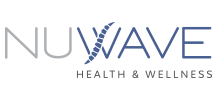Quick description: Nights, 12s, and rotating shifts are hard on sleep, stress, and your spine. Use this Clermont-specific guide for circadian fixes, post-shift wind-down, hip/ankle mobility, and quick meal basics.
If you’re working nights or 12s in Clermont—on the floor, in the truck, or on patrol—you’re stacking fatigue, stress chemistry, and physical strain. That combo steals sleep, tightens hips/ankles, and loads your low back and neck. The fix isn’t “try harder.” It’s a simple system you can run on auto-pilot: circadian basics → post-shift routine → mobility micro-circuit → quick meals that don’t crash you.
1) Circadian Basics (so your body stops fighting you)
Your body time-keeps with light, timing of food, movement, and caffeine. Use them on purpose:
- Anchor sleep: Even on off days, protect one consistent sleep anchor (e.g., 3–8 a.m.). Add naps/bonus hours around it as life allows.
- Light = “day,” dark = “night”:
- Working nights? Bright light during shift; dark glasses on the drive home; blackout your room.
- Days off? Get 10–20 minutes outdoor light within 2 hours of waking.
- Caffeine timing: Last dose 6–8 hours before planned sleep. Use smaller, earlier hits instead of a big late one.
- Meal timing: Treat your largest protein-forward meal as your “day start.” Keep very light (or skip) heavy meals in the last 2–3 hours before sleep.
- Micro-movement beats workouts at 2 a.m.: Short walks, breath resets, and mobility keep you alert without wrecking sleep later.
2) Post-Shift Wind-Down (20–30 minutes you’ll actually do)
Make this a checklist—don’t decide when you’re wiped.
- Commute downshift (5 min): Dark glasses, slow nasal breathing (in 4, out 6).
- Hot shower → cool room: Warm water relaxes; cool, dark bedroom (65–68°F) cues sleep.
- Quick bite if needed: Small protein + complex carbs (examples below).
- 2-minute brain offload: Write down to-dos for later; phone on Do Not Disturb.
- Breath + body (3 minutes):
- 5 breaths: in through nose 4, out 6
- 10 gentle chin tucks
- 10 shoulder blade squeezes
- Environment: Blackout curtains, white noise/fan, cool pillow. Tell family/roommates your quiet hours.
If you can’t fall asleep within 20–30 minutes, get out of bed, do a low-light page of a book or 5 slow breaths, then try again.
NuWave Pro Tip: (We like to through in Prayer and quick moment of gratitude and reflection before bed. We also like to make some time in the morning for the same thing. Health encompasses mind, body, and spirit, so do not neglect one!)
3) Hip/Ankle Mobility Micro-Circuit (10 minutes, pain-free)
Tight hips and stiff ankles force the spine to compensate—bad news on concrete floors and in the rig.
Do this pre-shift and post-shift (or at least once daily):
- Calf wall stretch – 2×20–30s each (knee straight, then slightly bent)
- Ankle “A-to-Z” – Trace the alphabet with each foot (slow, controlled)
- Hip flexor stretch – Half-kneel; tuck tail slightly; 2×20–30s/side (Refer to Stretches tab on website. Psoas stretch)
- 90/90 hip rotations – 6–8 slow reps/side
- Glute bridge – 2×10 (pause 2s at top, ribs softly down) (Refer to Stretches tab on website. Psoas stretch)
- Bird dog – 6–8/side (slow, no back sway) (Refer to Stretches tab on website. Psoas stretch)
On shift: every 60–90 minutes sneak a 30-second reset: calf stretch on a wall, 5 chin tucks, 5 shoulder rolls.
4) Quick Meals Basics (PFF: Protein + Fat + Fiber)
Shift fuel should keep you steady, not sleepy.
- Targets per meal:
- Protein: ~25–40 g (hand-sized portion)
- Fat: a thumb or two (nuts, olive oil, avocado)
- Fiber: a fist of produce or beans
- Hydration: 12–16 oz on waking; steady sips each hour. If you’re sweating, add electrolytes (not just sugar).
5-minute toss-ups before bed (light):
- Protein smoothie: whey/pea + oats + frozen berries + water/oat milk
- Oat cup with scoop of protein, cinnamon, and chia
- Herbal teas
What to avoid right before sleep: heavy/fried meals, large sugar hits, and big caffeine doses.
5) Spine Survival on the Job (nurses & responders)
- Footwear: Stable shoes; rotate pairs; swap insoles on schedule.
- Lifting/transfer: Hinge at hips, keep loads close, exhale on effort; ask for help or devices—pride doesn’t protect discs.
- Rig/Unit ergonomics: Secure gear so it doesn’t pull you sideways.
- Report writing: Raise screen if possible, sit back with lumbar support, stand for at least 1–2 minutes every 30–45. Try to aim for longer!
- Wallet/phone out of back pocket when seated—prevents pelvic tilt and nerve irritation.
6) A 7-Day “Shift-Proof” Plan
Day 1: Set up bedroom (blackout, cool, white noise). Build your post-shift checklist.
Day 2: Lock caffeine cutoff (6–8h before sleep). Run the mobility micro-circuit once.
Day 3: Add anchor sleep window; communicate quiet hours to family.
Day 4: Pack two PFF meals and an electrolyte bottle for shift.
Day 5: Mobility pre- and post-shift; 5-minute walk on the South Lake Trail or neighborhood loop.
Day 6: Photo your workstation and driver seat; add lumbar roll and raise the screen.
Day 7: Review: energy (0–10), back/neck (0–10), sleep hours, # of wake-ups. Keep what worked.
Red Flags (don’t wait on these)
- New, severe headaches with fever/neck stiffness
- Numbness in the saddle area, loss of bowel/bladder control
- Rapidly worsening leg weakness or foot drop
- Chest pain, shortness of breath, or unexplained swelling
Seek urgent evaluation.
FAQ (fast)
Night shifts forever wreck circadian rhythm, right?
They’re hard—but anchors, light control, and timing help a lot. Aim for consistent anchors, not perfection.
Standing desk fix my back?
It helps vary position. You still need mobility + micro-breaks.
Magnesium for sleep?
Some benefit from magnesium glycinate at night. Discuss with your provider, especially if pregnant or on meds.
Want a plan tailored to your schedule?
Bring your shift pattern, a quick food log, and photos of your workstation and driver seat. We’ll map your sleep anchors, mobility, and spine-saving tactics that fit your reality—not a perfect world.
New here or Curious to find out more about your health? Complete the “Is Pain Costing You More Than You Think?” Scorecard today!
New Here? Visit our contact page to schedule.
Educational content only; not a diagnosis. If you have red-flag symptoms, seek urgent care.

